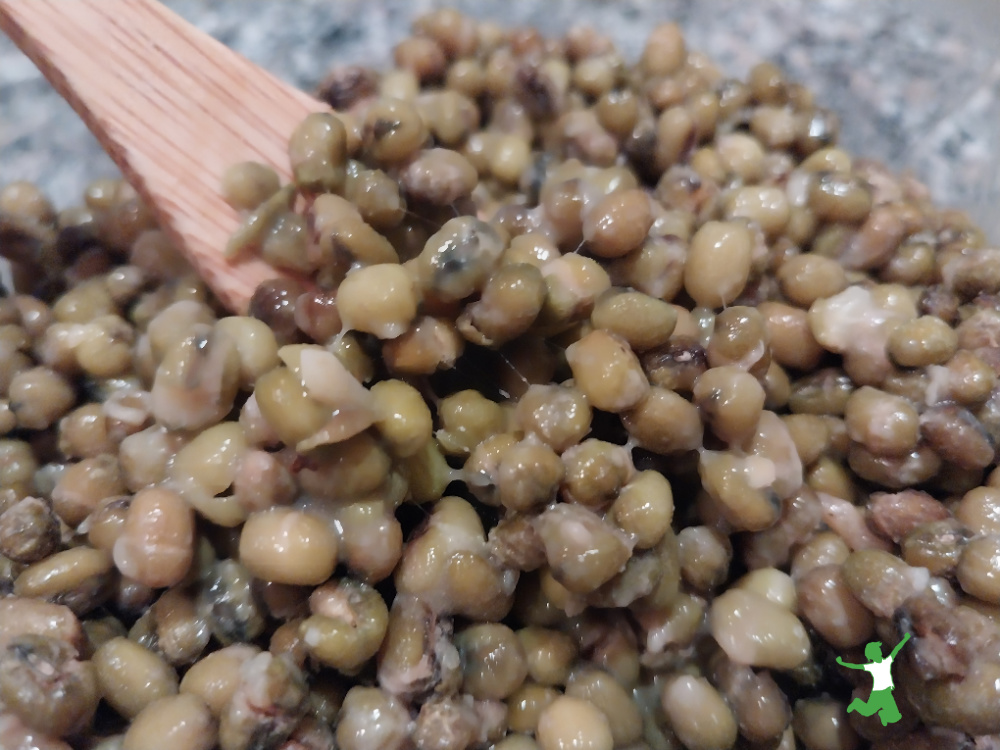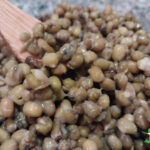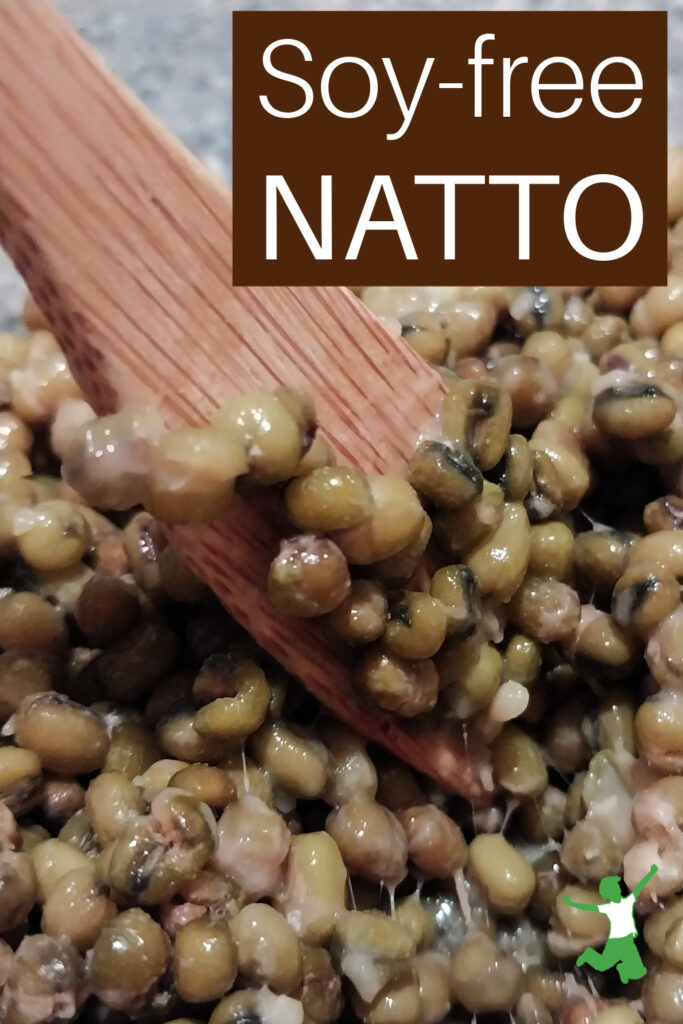Desk of Contents[Hide][Show]
Methods to make soy-free natto at house simply and inexpensively that’s wealthy in Vitamin K2 and therapeutic soil-based probiotics.

Natto is a important conventional meals to incorporate in your weight-reduction plan, but most conventional foodies paradoxically have by no means tried it.
Natto is a type of fermented soy and is without doubt one of the few (solely?) cultured meals that incorporates a helpful, soil-based bacterium.
Within the case of natto, it’s the highly effective intestine cleanup crew referred to as Bacillus subtlis.
Tempeh and miso additionally include soil-based microbes, however they’re the molds Rhizopus orzae and Aspergillus oryzae, respectively, which might trigger allergic points for some folks.
Correctly fermented kefir incorporates dozens of strains of helpful micro organism and candida-busting yeasts, however surprisingly, none of those strains are soil-based in response to my analysis.
Thus, it could come as a shock that consuming a wide range of fermented meals however excluding natto will doubtless depart an enormous hole in your probiotic expertise.
Soil-based micro organism are crucial for intestine restoration (aka, therapeutic leaky intestine) in addition to optimum intestinal upkeep.
For instance, these on the GAPS weight-reduction plan will doubtless plateau of their therapeutic journey in the event that they don’t both eat natto or take a therapeutic SBO probiotic (I recommend this model).
Since SBO probiotics are among the most costly available on the market, it’s a good suggestion to make natto your self.
You’ll save a bundle!
I truly love the style of natto and eat 1-3 tablespoons of my selfmade soy-free variations most days.
Phrase to the smart…natto is unquestionably an acquired style! Most individuals do *not* prefer it at first!
I desire to eat soy-free natto produced from fermented mung beans (you need to use different forms of legumes if desired).
Mung bean natto visually and texturally greatest mimics soybean natto to my palate.
If you happen to want to eat natto on a regular basis like I do, utilizing a legume apart from soy is smart because it avoids the thyroid-suppressing results of soy which stay even when fermented.
If I do eat soy-based natto, I maintain it to a teaspoon or much less to keep away from any goitrogenic dangers.
Bonus! Natto not solely incorporates elusive soil based mostly organisms (SBOs). It additionally incorporates extra Vitamin K2 than every other meals!
Solely 2 tablespoons of natto incorporates over 200 mcg of MK-7 (fermented type of Vitamin K2)!
So making your individual natto and consuming it frequently might allow you to forgo costly K2 dietary supplements as nicely.
Preparation Tip
I don’t suggest making natto with any kind of sprouted legume.
The outcomes prove mushy!
The consistency and texture of soy-free natto prove the very best while you soak your unsprouted legume of selection in a single day, prepare dinner till simply mushy, after which provoke the fermentation course of whereas the beans are nonetheless heat.

Selfmade Soy-free Natto
Methods to make natto at house simply and inexpensively with mung beans as an alternative of estrogenic soybeans.
Directions
-
Rinse mung beans and place them in a big glass bowl. Cowl with sufficient filtered water to permit the beans to roughly double in measurement as they broaden. Go away on the counter for 8 hours or in a single day.
-
Drain the soaking water and place beans in a big pot. Cowl with recent filtered water.
-
Deliver the beans to a boil, flip down the temperature to a simmer, affix the lid and prepare dinner the beans for about 20 minutes till simply mushy however not mushy (don’t overcook!).
-
Drain the beans and place in a giant VitaClay gradual cooker or crockpot. The beans ought to be not more than 1″ in depth. Discard any beans which will by accident spill through the switch from the pot to a VitaClay (or different gradual cooker).
-
Let the beans cool for 10 minutes within the Vitaclay.
-
Whereas the beans are cooling barely, dissolve a packet of natto starter in 3 Tbsp of heat filtered water.
-
Pour the natto spore answer over the cooled however nonetheless heat beans. Stir gently to combine with a clear, bamboo spoon.
-
Place the lid on the VitaClay and choose the “yogurt” setting.
If utilizing a special kind of gradual cooker, use the setting that can maintain the beans between 100-110 °F/ 38-43 °C which is the temperature vary essential to ferment the beans into natto.
-
After 24 hours, flip off the Vitaclay, take away the lid, and funky the natto to room temperature for 1 hour. A whitish movie and an ammonia-like aroma means they’re executed. The beans may even have a stringy and slimy look (see photograph above).
-
Place the cooled natto in a glass container with a tight-fitting lid and refrigerate.
-
Natto will probably be able to eat as soon as refrigerated in a single day. It can final for months, and the flavour will age and strengthen with time.
-
Mung beans include lower than 1% of the isoflavones in soy. Thus, be at liberty to eat 1-3 tablespoons per day of mung bean natto for a reasonable and attractive soil-based probiotic and Vitamin K2 meals supply.
Diet Information
Selfmade Soy-free Natto
Quantity Per Serving (1 Tbsp)
Energy 23
Energy from Fats 9
% Every day Worth*
Fats 1g2%
Saturated Fats 0.1g1%
Polyunsaturated Fats 0.5g
Monounsaturated Fats 0.4g
Potassium 33mg1%
Carbohydrates 2.5g1%
Fiber 2g8%
Protein 1g2%
Calcium 4.5mg0%
Iron 0.2mg1%
* P.c Every day Values are based mostly on a 2000 calorie weight-reduction plan.

 Most pediatricians miss this…
Most pediatricians miss this…